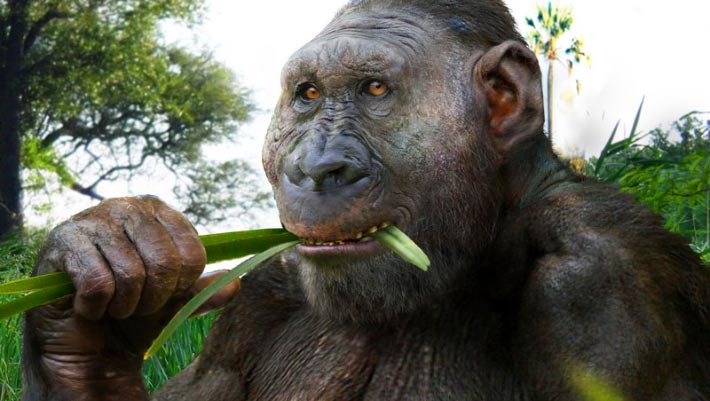Paranthropus robustus is a well-documented hominin species with no genetic evidence reported so far. It lived between 2 million and 1.2 million years ago in what is now South Africa. In new research, paleoanthropologists obtained enamel protein sequences from 2-million-year-old dental specimens attributed to this hominin from the South African site of Swartkrans. Their findings suggest greater diversity within Paranthropus than previously recognized and support the possibility of multiple distinct species within the genus.

Paranthropus boisei. Image credit: © Roman Yevseyev.
While advances in ancient DNA (aDNA) sequencing have enabled valuable insights into the evolutionary relationships of Middle to Late Pleistocene hominins, understanding of earlier Pliocene-Pleistocene species, like Paranthropus, remains limited.
This is largely because aDNA does not survive well in African hominin fossils older than 20,000 years of age.
Paranthropus has traditionally been viewed as a single evolutionary group.
However, overlapping traits between Paranthropus robustus and Australopithecus africanus have raised questions about their potential evolutionary relationship.
Moreover, variation in tooth structure suggests either hidden diversity within Paranthropus robustus or the presence of multiple separate species.
In the current study, Dr. Palesa Madupe from the University of Copenhagen and the University of Cape Town and colleagues used ancient proteins — which can persist far longer — to investigate variation within this ancient hominin species.
Using high-resolution mass spectrometry and paleoproteomics techniques, they analyzed dental enamel proteins from four Paranthropus robustus fossils found in Swartkrans Cave.
Dated to between 2.2 and 1.8 million years ago, these specimens represent some of the earliest known of this hominin.
Protein sequence analysis revealed molecular-level variation among Paranthropus robustus individuals, including evidence of both male and female specimens, challenging the reliability of tooth-size-based sexing and suggesting that sexual dimorphism alone cannot account for the observed diversity in the fossil record.
Notably, one individual appears genetically distinct from the others, which may indicate the presence of a different Paranthropus group or reflect substantial intraspecific variation.
The findings align with recent morphological evidence pointing to previously unrecognized taxonomic diversity within the genus, including the proposed species Paranthropus capensis.
“Our study demonstrates how paleoproteomics can help distinguish sexual dimorphism from other sources of variation in African Early Pleistocene hominins,” the authors concluded.
The study was published in the journal Science.
_____
Palesa P. Madupe et al. 2025. Enamel proteins reveal biological sex and genetic variability in southern African Paranthropus. Science 388 (6750): 969-973; doi: 10.1126/science.adt953
